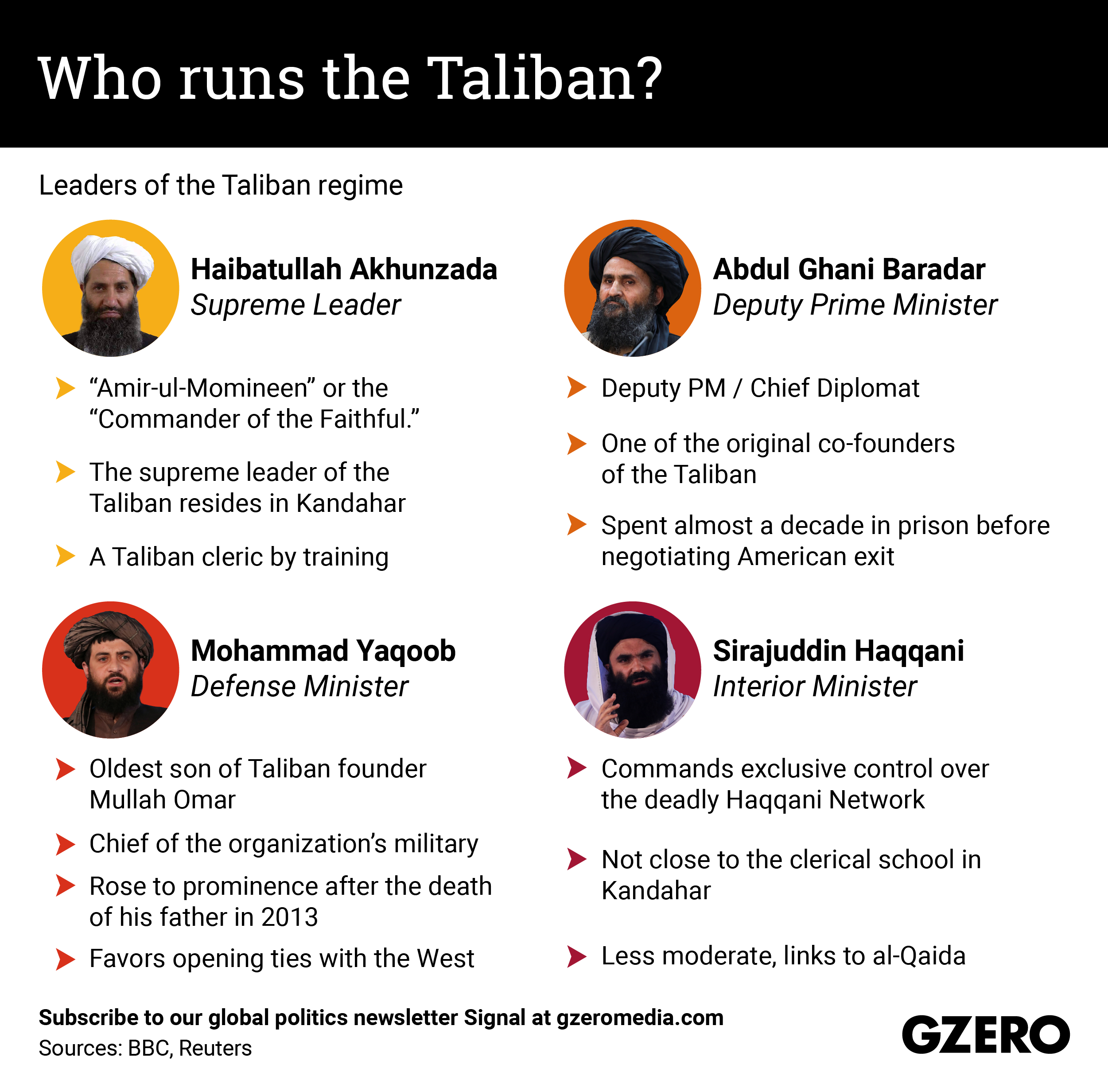August 14, 2022
The Taliban have been in control of Afghanistan for a full year. But before they took over, they had a shadow government operating across vast swaths of the country, complete with a justice, policing, and tax system. After the US left, and the democratic Afghan government fled, the Taliban didn’t take long to form an “interim” government not just in Kabul but also their own “spiritual” capital of Kandahar. Today, the regime is split, with the all-important religious leadership residing in Kandahar, and the more bureaucratic, hands-on cadres in Kabul. And this comes with its political divides as well: recently the Kandahar-based supreme leader vetoed Kabul’s decision to let girls return to schools. We list the leading who’s who of the Taliban regime.
More For You
- YouTube
Is the AI jobs apocalypse upon us? On Ian Explains, Ian Bremmer breaks down the confusing indicators in today’s labor market and how both efficiency gains as well as displacement from AI will affect the global workforce.
Most Popular
Think you know what's going on around the world? Here's your chance to prove it.
Reform UK leader Nigel Farage holds a post-budget conference in London, United Kingdom, on Nov. 26, 2025.
Phil Lewis/WENN
Nigel Farage, the far-right UK leader, reportedly told donors that he plans to join forces with the center-right Conservative Party ahead of the next election. Right-wing groups in other parts of Western Europe have largely avoided making such an alliance.
Nearly four years into Russia's invasion of Ukraine, the push to end the war is intensifying. The past few weeks produced not one but two proposals.
© 2025 GZERO Media. All Rights Reserved | A Eurasia Group media company.
